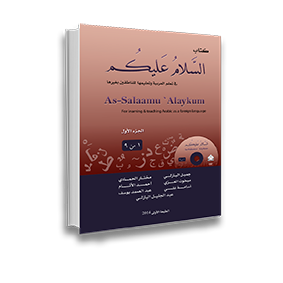After completing this textbook, the learners will be able to:
1. Master Arabic alphabet; letters and sounds, spoken and written.
2. Distinguish between approximate sounds.
3. Distinguish the shapes of letters in the beginning, the middle, and the end of words in reading, and writing.
4. Link between mental images of initial objects available at home and the classroom and their written drawings.
5. Introduce oneself to others in the situations of greetings, introduction, and nationality.
6. Exercise numbers from one to hundred.
7. Acquire basic tangible vocabulary around the student at home, in the classroom, and in the grocery.
8. Master individual pronouns (I, you masculine, you feminine, he, she) separated, and connected, and first prepositions (from, in, to, on, under).
9. Distinguish between male, and female nouns using “Ta Marboota”.
10. Exercise “al” shamsia, and “al” qamariah.
11. Realize cultural clues of Arabic culture in the conversational situations presented in the book.
12. Acquire learning strategies such as analysis of words into letters, putting letters together to form words, making flash cards of vocabulary learnt using Arabic and English, and memorizing and regular revision of new vocabulary.

